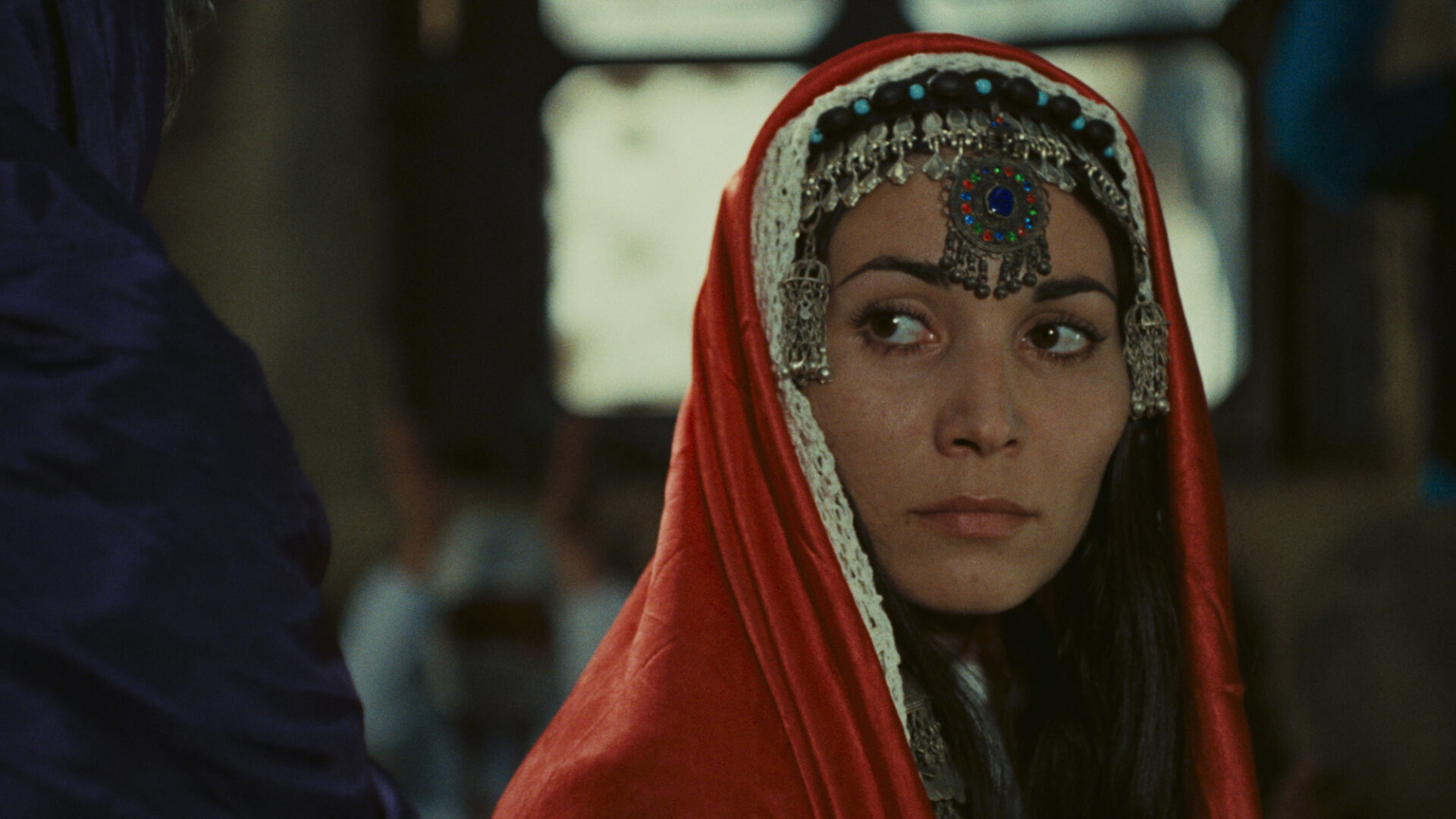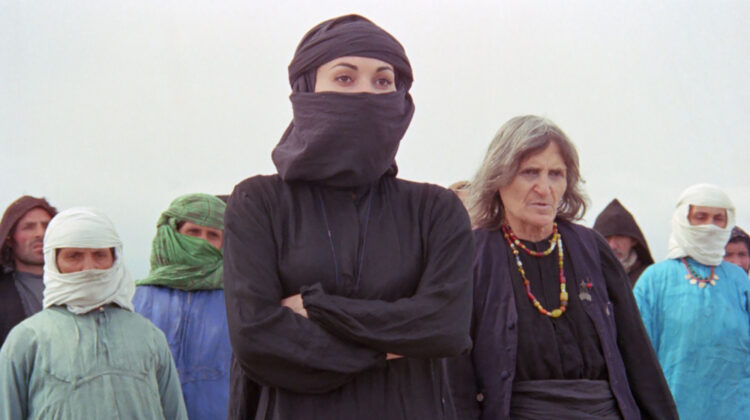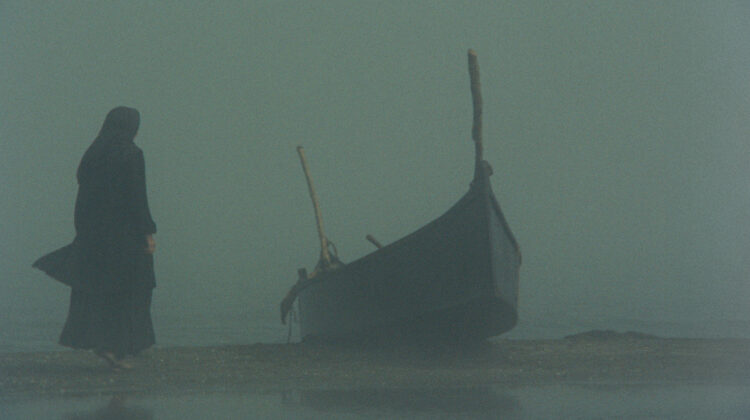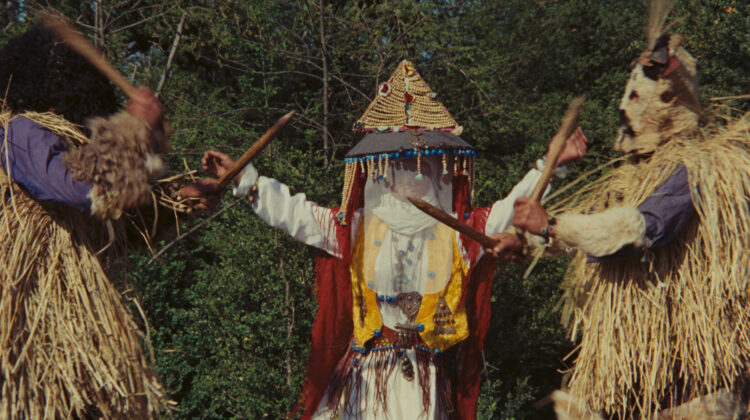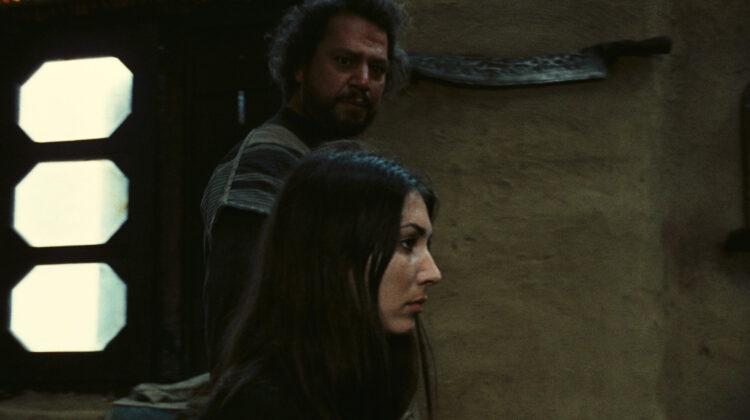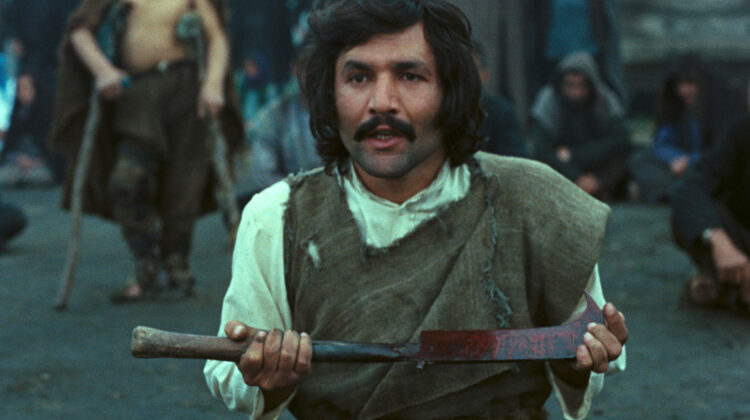- The Stranger and the Fog
- غریبه و مه
- Iran1974
- Bahram Beyzaie
- 146 DCP
- NR
Screening Dates
- November 30, 2024 8:30
- December 1, 2024 6:00
- December 4, 2024 7:00
- December 6, 2024 8:30
“Dripping with haunting imagery and violent interruptions, the film is based on Beyzaie’s own nightmares … Can [be] easily associated with the films of Kurosawa and Tarkovsky—and perhaps also Robin Hardy’s The Wicker Man.”
Julia Gunnison, Screen Slate
After the success of his debut Downpour, Bahram Beyzaie returned to its classical premise (“a stranger comes to town”) and made it genuinely strange for his follow-up—a film for an audience unafraid to go one step further than the comfortable norm, the playwright and director later said. An unusually grand and mythic entry in the Iranian New Wave, The Stranger and the Fog is a film with the scale to match period epics by Kurosawa or Bergman. Its on-location earthiness is in service to a tale rooted in medieval Persian texts, part of Beyzaie’s interest in Iran’s supposedly distant cultural origins. The stranger is Ayat; the place is the northern coast in an indeterminate century. The custom, he’s told, is to integrate with the people by marriage, or be banished. Parvaneh Massoumi plays Rana, whose acceptance or rejection of Ayat’s proposal carries the power of Sophoclean tragedy.
In Farsi with English subtitles
“Another holy grail of the Iranian New Wave has been found and brought back to life … In the film’s meticulously structured circular narrative, characters, times, and spaces rhyme and mirror each other, turning filmmaking into an act of dreaming.”
Ehsan Khoshbakht, Il Cinema Ritrovato 2023
“Displays a visionary quality ahead of its time … The Stranger and the Fog, with its unique blend of abstract, ritualistic, and cinematic elements, [challenges] the accepted realism of its era.”
Amir Hossein Siadat, Senses of Cinema
